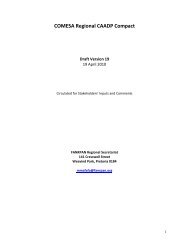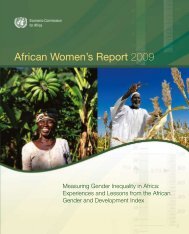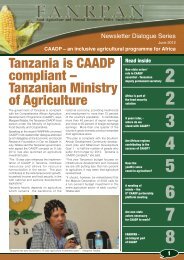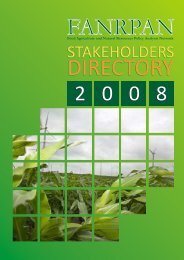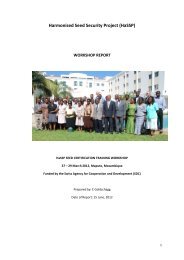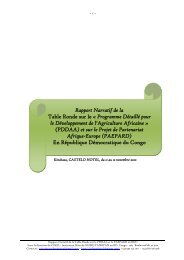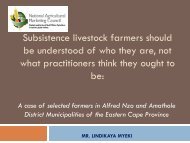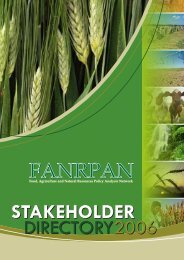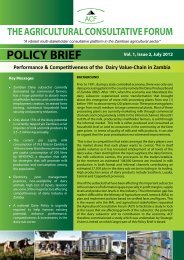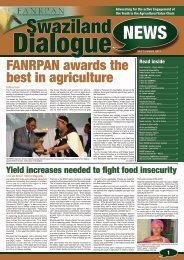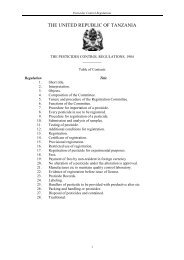Community-driven development decision tools for rural - IFAD
Community-driven development decision tools for rural - IFAD
Community-driven development decision tools for rural - IFAD
- No tags were found...
You also want an ePaper? Increase the reach of your titles
YUMPU automatically turns print PDFs into web optimized ePapers that Google loves.
• con<strong>for</strong>mance with conditions imposed on the public resource transfer (e.g. ceiling on costper subproject and per beneficiary household, technical viability, sound financial practicesenvisaged <strong>for</strong> procurement, accounting, and reporting on the use of funds).While district governments must coordinate with the DMP, they can take a minimum amountof time and allocate support to the communities in a way that is compatible with the CDDproject objectives and the communities’ effective demand. Ensuring compliance with socialand environmental safeguards is also a specific government function. However, controls shouldbe exercised throughout the subproject, not just during the project approval phase. It ispossible to avoid the need <strong>for</strong> these kinds of controls be<strong>for</strong>e a community initiative isapproved <strong>for</strong> funding by training and advertising (through the animators of the VDCs) thecriteria that must be used in the subprojects’ design and inspecting ex post the subprojectimplementation. Matters concerned with con<strong>for</strong>ming to conditions imposed on the publicresource transfer also can be treated ex post.Coordinating community plans and district master plansA potential conflict may exist between community priorities and district priorities. Ruralcommunities have difficulty in making their voices heard at the district level and in gettingtheir interests addressed. Dedicating funds to community-level initiatives (separate from thefunds that support district-level projects) increases the chance that communities’ voices andinterests will be heard. While this approach distinguishes between the two levels, it should notbe seen as creating conflict, but rather accelerating the synergies between the community andthe district levels.CDD projects would be well advised to finance the preparation of the DMPs. This couldprovide an opportunity to negotiate with the districts about which solutions <strong>for</strong> providinggoods and services in <strong>rural</strong> areas could be supported and financed under the districtinvestment plan and which ones should be implemented at the community level and fundedthrough a separate channel <strong>for</strong> community-level projects. Box 32 shows examples of howauthority, responsibility and channels of funding would be divided in certain sectors.Once the roles of the district and community levels have been defined and agreed upon, theCDD project can proceed with funding community subprojects autonomously, as long as thecommunity-level projects are consistent with the DMP.How does the district administration ensure that its requirements have been met? Severalapproaches have been tested to accomplish this without jeopardizing autonomous <strong>decision</strong>makingat the community and district levels. Box 33 summarizes three different solutionstested by the World Bank and <strong>IFAD</strong> projects in WCA.Box 31Approving community requestsCDD projects envisage the approval ofcommunity subprojects by• the PCU;• the PPSC;• a department of the central governmentministry responsible <strong>for</strong> the project;• the District Development Committee (i.e.organ of the district administration);• the District Assembly (i.e. elected politicalrepresentation of the territory);• the Subdistrict Development Committees(i.e. organs of the local governmentadministration);• a CSO of public utility with membershipincluding local government and NGOs;• a CSO of public utility with membershipincluding CBOs, local NGOs and localgovernment representatives.67



